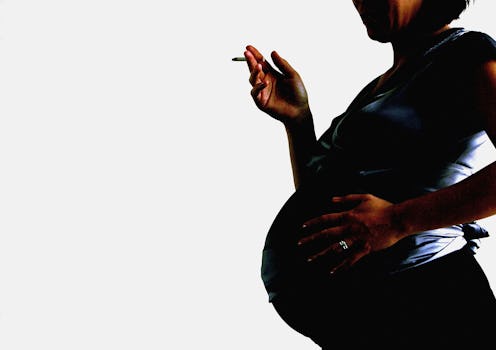News
This Is How Your Unborn Baby Looks When You Smoke
We already know that smoking while pregnant is a bad idea. According to the CDC, smoking during pregnancy can cause premature labor, placental problems, low birth weight, and an increased rate of birth defects; it is also a risk factor for SIDS (Sudden Infant Death Syndrome). While warnings of worst-case scenarios and long term consequences may seem rather abstract, a new study out of the U.K. captures these harmful effects with shocking visual immediacy — in the form of ultrasound images that show unborn babies grimacing as their mothers smoke.
Dr. Nadja Reissland, an expert in fetal development at Durham University, studied the pregnancies of 20 women, using moving 4D ultrasound scans to study the minute movements and facial expressions of fetuses in the womb. Of the 20 subjects, four smoked an average of 14 cigarettes on a daily basis. After studying scans at regular intervals, Dr. Reissland found that the fetuses of mothers who smoked moved their mouths and touched themselves at a higher rate than those of non-smokers. These physical behaviors usually decrease over time, as fetuses gain further control of their bodies; Dr. Reissland theorizes that the higher instance of movement among the unborn babies of smokers may be due to delayed development of the central nervous system. The image below shows a comparison of Dr. Reissland's scans: the bottom pictures show the fetus of a non-smoking mother, apparently calm and resting, while the top ones reveal the fetus of a mother who smokes. This fetus appears to be considerably more active than its counterpart.
As Dr. Reissland tells The Telegraph, further investigation is necessary before we can draw definitive conclusions about the relationship between smoking and fetal movement. She explains, "A larger study is needed to confirm these results and to investigate specific effects, including the interaction of maternal stress and smoking." Although Reissland's research is ongoing, her scans are important in themselves as powerful illustrations of the profound effects that smoking can have on infant development. She says that she hopes that they will help to motivate expectant mothers to give up smoking. I can certainly see how, for many people, these simple, heartrending images could work as a more compelling disincentive than all the warnings and statistics we can throw at them. Sometimes a picture really is worth a thousand words.
